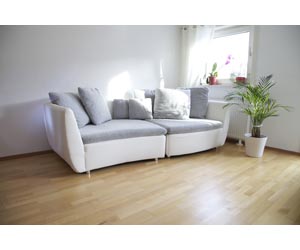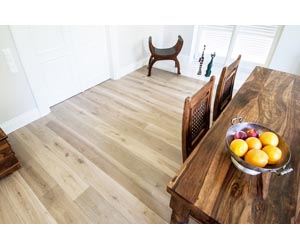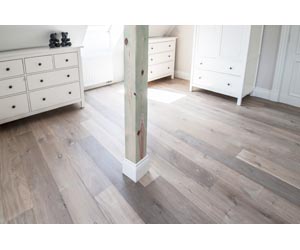


One of the most effective ways to bring together a room or renovation is to improve the flooring. Whether you choose a lush carpet or new floorboards, good quality flooring will add a sense of cohesion to interior design. But what if the renovations include combining different living spaces that have different floors coverings with different floor level? Can you still lay floating floorboards over tiled areas of a house? The short answer is yes, but there are a number of issues that need to be considered.
Height (floor levels)
Adding timber flooring over tiles will raise the height of the floor, also reducing the floor to ceiling height. This means that internal doors will need to be adjusted for clearance from the floor. There is also the possibility that carpeted areas will be significantly lower than other flooring areas and the new floorboards.
In order to reduce tripping hazards when moving between areas with different flooring you will need to ensure the floor base heights are the same. This can be done by:
- Adding a step - Creating clearly defined step from one type of flooring to the other (minimum 250mm rise)
- Sloping the floor - Lightly sloping the floor between different floor levels
- Packing - Packing the lower floor areas with plywood sheeting (or similar). Using plywood sheeting between the new floorboards and the existing tiles is a great method of ensuring the flooring will be level. The sheeting is placed over the tiles and then the floorboards are glued or nailed to the sheeting.
- Using a self leveling liquid - If you have small irregular areas of flooring that are lover than others you can apply a self leveling product. Just pour it in the area that is low, it will level itself , some blending in at the edges maybe required. Self leveling products can be expensive so it is worth working out how much you need and getting a price before you commit to this method.
IMPORTANT TIP: If you're planning to raise your floor levels to accommodate new flooring and different floor levels (even by 20mm), ensure that your ceiling heights still comply with habitable ceiling heights (ask your local council Building Inspector about this). As a general rule house ceiling heights cannot be lower than 2400mm high.
Noise transmission
Timber or wooden flooring can be noisy (tiles and concrete even noisier). So care needs to be taken not to increase noise generation, and everything should be done to reduce noise movement (reverberation).
Laying floorboards directly over tiles can be done, but it will create hollow areas underneath the floorboards. This will drastically increase the noise of your new floor (hollow areas can also encourage moisture and mould to develop between the tiles and floorboards).
Underlay, underlay underlay...
- Use underlay - Choosing an underlay to fit between the new flooring and the existing floor (no matter what the flooring base) is essential.
- Don't skimp on underlay - By using the best underlay you can afford, you will ensure the best quality of noise insulation and absorption.
Costs
As a bonus, it is often cheaper to lay floorboards directly over tiles, as this removes the cost of having to remove the existing tiles. Before laying floorboards over tiles, you must ensure that the tiled surface is level and it has been cleaned and dried. It is worth spending a bit of your budget on proper cleaning of the tiles.
Using the plywood method is probably the most cost effective. The manager of SE Timber in Drummoyne, Ivan Lloret, says you should "Expect to pay about $75 per square metre." If you decide to remove the tiles from the floor altogether, you can expect to add approximately another $70 per square metre.
No matter which method you use, you will be happy.
